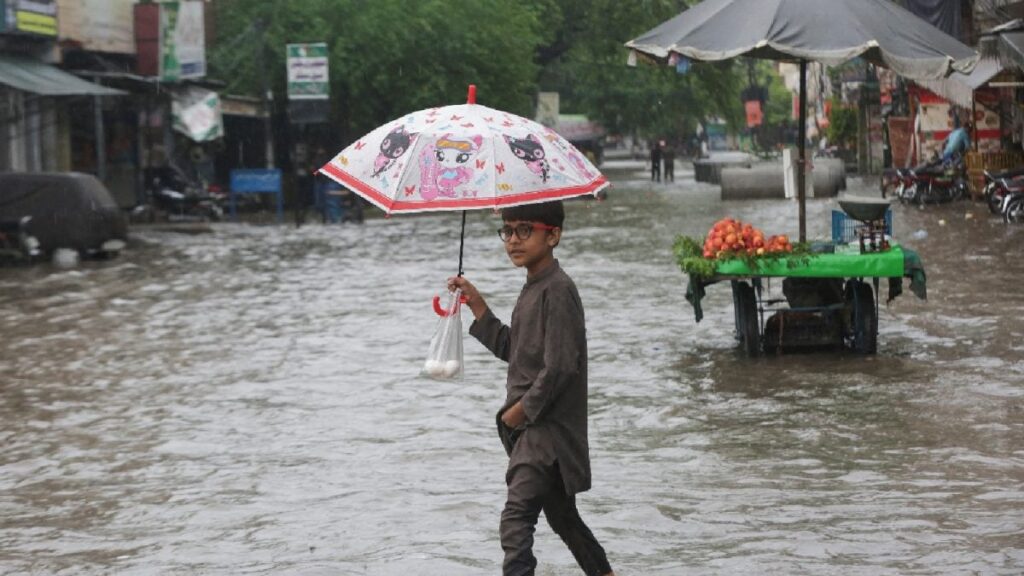
Last Updated:
Heavy rains battered Pakistan’s Punjab province and led to over five dozen deaths.

A child holds an umbrella as he wades through a flooded street after a downpour in Lahore, Pakistan. (IMAGE: REUTERS)
Over 63 people either drowned or got electrocuted to death as torrential rains battered Pakistan’s Punjab province in a period of 24 hours. Over 290 people were injured during this period.
A report by broadcaster BBC said that most of the victims were crushed by collapsing buildings and the rest drowned or were electrocuted to death, citing the Pakistani disaster management body.
Authorities of Rawalpindi city declared Thursday as a public holiday to keep residents indoors and asked people living along Nullah Leh, a tributary of Indus, have been asked to evacuate, however, a Thursday report by GeoNews said that water levels started decreasing as the rain finally stopped after 18 hours.
The latest deaths take the toll to nearly 180 since the monsoon started in late June in Pakistan. More than half of them were children, the BBC report pointed out.
Floods have wreaked havoc across Punjab province, shutting down key expressways and disrupting dozens of flights. On Thursday, Punjab Chief Minister Maryam Nawaz declared an emergency in several districts as rain-swollen rivers flooded towns and villages.
In Chakwal, which recorded 400 mm of rain in a single day, rescue teams used boats to locate stranded residents, while military helicopters circled above submerged areas, the broadcaster said in its report. With more rains and flash floods forecast over the weekend, thousands of emergency workers have been put on standby.
Pakistan’s vulnerability to such disasters stems from its exposure to two clashing weather systems — the Western Disturbances, which bring high temperatures and drought-like conditions, and the Southwest Monsoon, which dumps heavy rains, often triggering floods.
To make matters worse, Pakistan is home to over 13,000 glaciers, many of which are melting at an accelerated pace due to climate change. The risks became all too clear in 2022, when catastrophic monsoon floods killed 1,700 people and submerged a third of the country, inflicting economic losses of over $30 billion.

Shankhyaneel Sarkar is a senior subeditor at News18. He covers international affairs, where he focuses on breaking news to in-depth analyses. He has over five years of experience during which he has covered sev…Read More
Shankhyaneel Sarkar is a senior subeditor at News18. He covers international affairs, where he focuses on breaking news to in-depth analyses. He has over five years of experience during which he has covered sev… Read More
view comments
- Location :
Lahore, Pakistan
- First Published:





![[keyword]](https://freakbate.com/wp-content/uploads/2025/07/108148976-1747858658246-gettyimages-2212016183-NOVO_WEGOVY-768x432.jpeg)